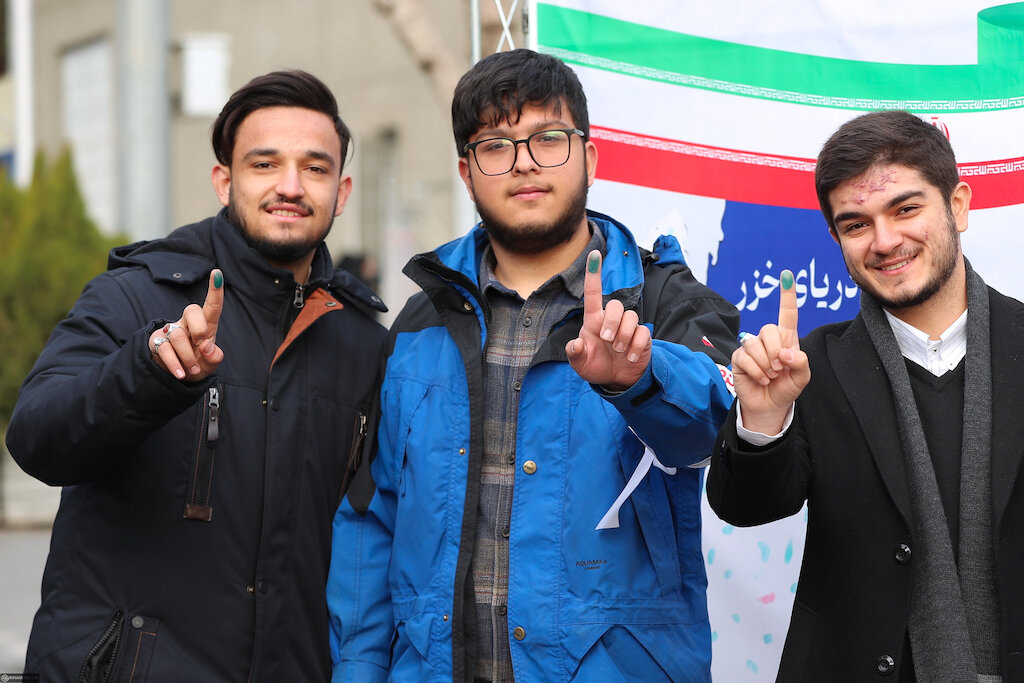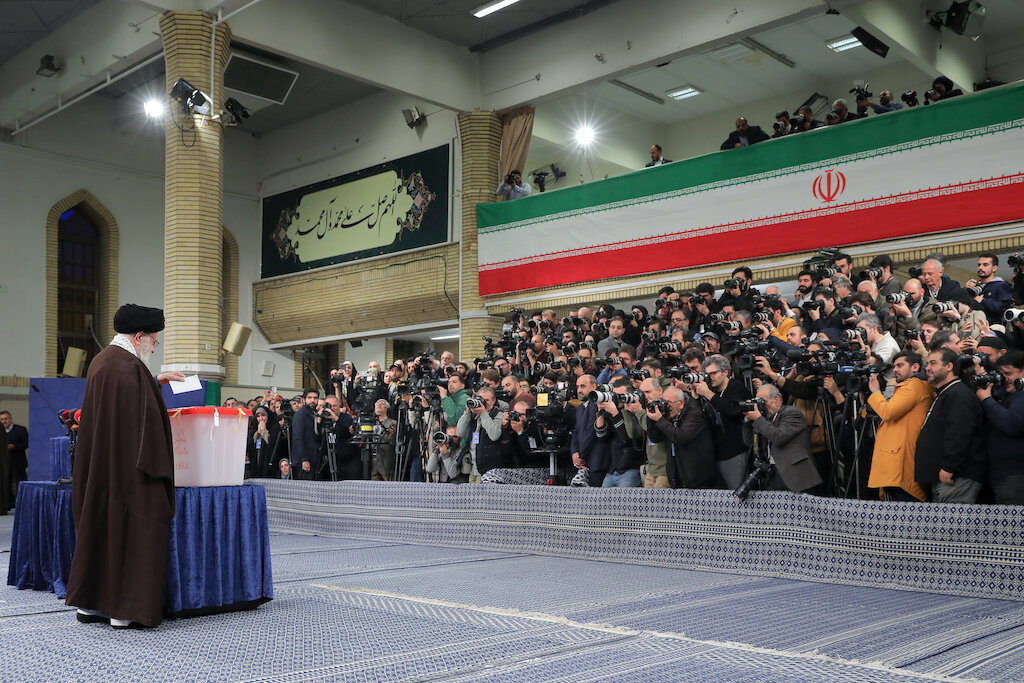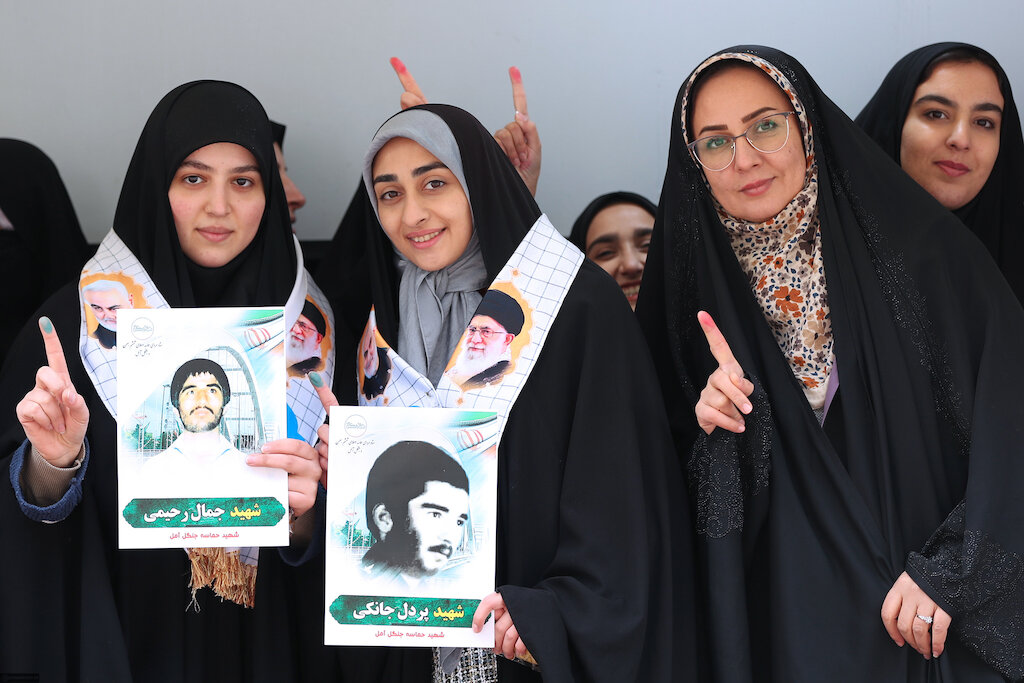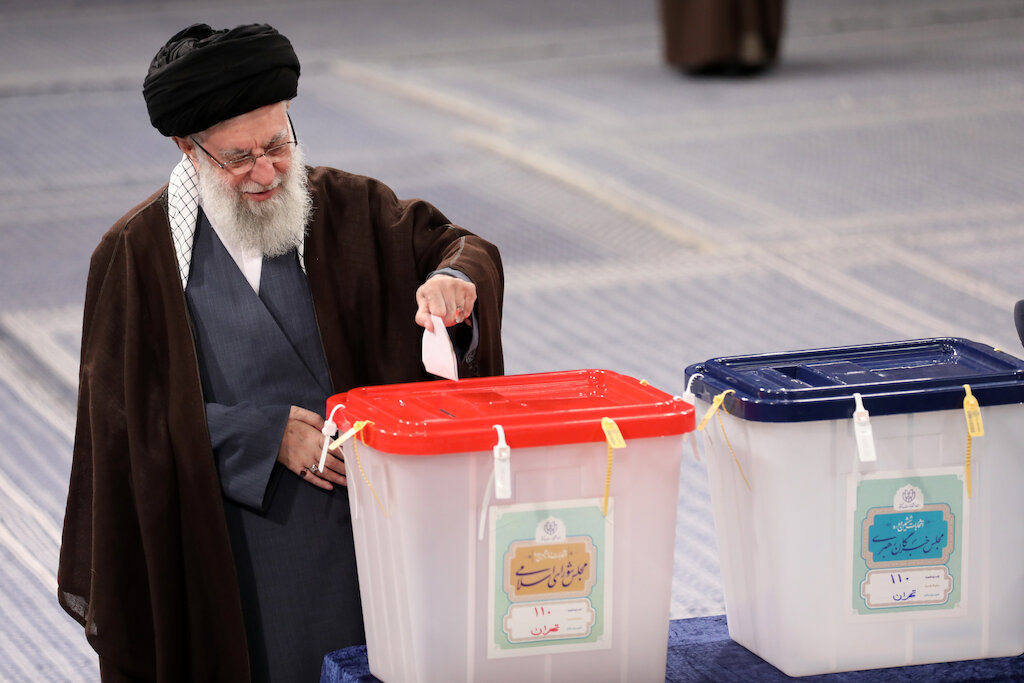Publications
INSS Insight No. 1834, March 14, 2024
On March 1, 2024, elections were held for the Iranian parliament, the Majles, and the Assembly of Experts. Despite the anticipated victory for the conservatives, these elections held significant importance as they marked the first substantial test of the regime’s power since the widespread wave of protests that swept Iran in 2022 and against the backdrop of a likely power struggle to take over the country in the coming years. Despite calls from senior regime officials urging the public to vote, the Interior Ministry reported a turnout of around 41 percent (including split votes)—the lowest rate since the Islamic Revolution. According to the results published thus far, the conservatives have maintained their absolute control over the legislative body and the Assembly of Experts. Notably, among those elected, figures affiliated with the hardline faction within the conservative camp are predominant. These elections manifested two key trends in the Islamic Republic over the past few decades: the ongoing erosion of public faith in the regime and in both main political factions, as well as the increasing authoritarianism of the state, which has ensured that the political institutions remain under the absolute control of those loyal to the supreme leader. However, this process has not helped the regime provide solutions to the public’s problems and demands; instead, it has widened the gaps between the government and the people. This dynamic persists even though it ensures relative cohesiveness among the political elite—a factor the regime viewed as essential, even at the cost of further eroding its own legitimacy, especially as Iran approaches the end of the Khamenei era.
On March 1, 2024, elections were held for the Majles, the 290-seat Iranian parliament, with five seats reserved for members of the country’s officially recognized religious minorities. These elections, occurring every four years, utilize a regional-personal electoral system. Simultaneously, elections were held for the Assembly of Experts, consisting of 88 clerics. This assembly undergoes elections once every eight years. As per the constitution of the Islamic Republic, the Assembly of Experts holds the responsible of overseeing the activities of the supreme leader, appointing his successor, and even removing him if the Assembly deems him unfit to fulfill his duties. A conservative victory was anticipated, considering the Guardian Council’s role in vetting candidates. Both elections were significant for two main reasons. First, they served as a substantial initial test of the regime’s power since the widespread wave of protests that erupted in September 2022, following the death of Mahsa Amini, and continued until early in 2023. Second, they represented another stage in the entrenchment of conservative hegemony in the elected bodies of the Islamic Republic, especially in anticipation of the likely power struggle to take control of the country in the coming years.
Approximately 37,000 candidates registered to compete in the Majlis election, with 15,200 receiving approval from the Guardian Council, including around 1,700 women. The vast majority of the approved candidates were closely affiliated with the conservative camp. As in previous election campaigns over the past two decades, there were disagreements within the reformist camp over whether to participate in the election. On February 10, 2024, the Reformists Front announced that it would not run in the elections, which they contended were neither free, fair, nor competitive. In its statement, the front added that only the formation of a strong and independent Majles and government, through free elections allowing all political movements to participate, could solve Iran’s problems. In contrast, a group of 110 intellectuals, social activists, former members of the Majles, and journalists aligned with the pragmatists issued a call for the public not to boycott the elections. They argued that participating in the election was essential to ensure some representation for the reformist camp and to curb, to whatever extent possible, the power of the conservatives and the hardliners. The decision by most reformists not to participate in the elections reflects the predicament of their camp, rendered irrelevant in the political system due to its weakness and its inability to resist the tight grip that the conservatives have on all centers of power. Further evidence of this trend can be found in the unprecedented decision by former president Mohammad Khatami, one of the most prominent leaders of the reformist camp, to abstain from voting.

Under these circumstances, the elections largely constituted an internal battle within the conservative camp. In the Tehran province, represented by 30 members in the Majles, former parliamentarian Ali Motahari headed the Voice of the Nation list. This list included 30 candidates affiliated with the pragmatic conservatives and supporters of former president Hassan Rouhani. Motahari, a member of the moderate conservative camp, has, in recent years, adopted a critical approach to the regime’s policies on various controversial issues, such as personal freedoms and political detentions. The Guardian Council had disqualified him from running in the 2020 Majles election, but this time he gained approval. He presented a list of candidates that he asserted was independent and did not align with either the conservative or reformist camp.
Despite senior Iranian officials, including Supreme Leader Ali Khamenei, urging citizens to vote, the turnout was the lowest since the Islamic Revolution. According to data released by the Iranian Interior Ministry, approximately 25 million people participated in the election, constituting 41 percent of all eligible votes (including spoiled ballots), compared to the 43 percent turnout in the previous 2020 election. In Tehran province, the turnout was even lower at just 24 percent, in contrast to the 26 percent in the previous election. For the sake of comparison, in the two preceding Majles elections in 2012 and 2016, the voter turnout exceeded 60 percent. In the Majles elections of 2004 and 2008, the turnout was slightly lower, just under 50 percent, while in 1996 and 2000, the turnout was even higher at around 70 percent. Despite the low turnout of this current election, supporters of the regime portrayed it as an achievement, arguing that it demonstrated the failure of radical opponents of the regime who had called for a boycott of the elections.

As anticipated, the conservatives maintained their complete control over the legislative body. According to interim results, conservatives secured all of the seats in Tehran, with Motahari’s list failing to gain a single representative in the Majles, including Motahari himself. Furthermore, among the elected representatives, the hardline branch of the conservative camp predominates and aligns more closely with the positions of President Ebrahim Raisi. The failure of the moderate conservatives, who now hold only a few dozen seats in the Majles, can be attributed to the low voter turnout, especially in Tehran. This low turnout served the interests of the hardliners, who are more invested in the elections and have a higher voting rate. The current Majles speaker, Mohammad Bagher Ghalibaf, who headed a list comprising the Coalition Council of Islamic Revolution Forces and the hardline Endurance (Paydari) Front of the Islamic Revolution, secured his place in the next Majles but failed to secure one of the first three places in Tehran. Whether he retains his position as the speaker of the Majles depends on the balance of power between the conservatives and the hardliners once the final results are announced. This will also affect the balance of power between the legislative authority and the Raisi government. During the outgoing Majles, some disagreements arose between Ghalibaf and the government, particularly on issues relating to the government’s economic policy against the backdrop of the ongoing monetary crisis and the conduct of several cabinet ministers. In April 2023, the Majles even impeached the minister of industry, trade, and mines in Raisi’s government, Reza Fatemi-Amin. However, the impact of these policy differences on the government remained limited.
The conservative loyalists of Supreme Leader Khamenei have successfully maintained their absolute control over the Assembly of Experts. Since its establishment in December 1982, the conservatives have firmly dominated the Assembly, despite occasional differences of opinion between hardline clerics and more pragmatic-centrist clerics. Typically, elections for the Assembly do not attract much attention, as it is not a body actively involved in daily politics. However, the significance of this particular election was heightened by the high likelihood that the 88 members of the new Assembly will be tasked with selecting a successor to Supreme Leader Khamenei, who is nearing the age of 85.

Initially, 510 candidates submitted applications to run in the Assembly election. After the vetting process, the Guardian Council approved 144 of them, a proportion similar to those disqualified in the previous election. Among the disqualified candidates was former president Hassan Rouhani, a member of the Assembly since 2000. His disqualification further attested to the regime’s efforts to establish a complete conservative hegemony in Iran’s state institutions, including the Assembly of Experts. In response to his disqualification, Rouhani sent three letters to the Guardian Council, demanding reasons for its decision but received no response. The Guardian Council also disqualified all four of the candidates running against President Raisi in the southern Khorasan province. However, following public anger over Raisi running as the sole candidate, the Council approved the candidacy of one additional person, who ultimately was not elected. Raisi’s name has been mentioned in various reports as a potential candidate to head the Assembly of Experts, replacing high-ranking cleric Ayatollah Ahmad Jannati. The 97-year-old Jannati, also serving as the head of the Guardian Council, chose not to run again in this election. The election of Raisi to this position would not only solidify his standing ahead of the 2025 presidential election but also mark another step toward his potential appointment as Iran’s next Supreme Leader, and at the very least, it positions him as a key figure in the succession battle. These considerations come amid reports suggesting that, upon the death of Supreme Leader Ali Khamenei, his son, Mojtaba Khamenei, could be appointed as his successor.
In conclusion, the elections for the Majles and the Assembly of Experts reflect two significant trends in the Islamic Republic over the past two decades: the ongoing erosion of public faith in the regime and in the two main political factions, namely the conservatives and the reformists, as well as the noticeable increase in the regime’s authoritarianism, which, over the years, has constrained the limits of political consensus and eliminated any political or ideological rivals. This process has strengthened conservative hegemony within the political elite ruling Iran and has diminished the regime’s support base. The regime has suppressed any alternative pockets of political power, ensuring that the political system remains under the absolute control of the various conservative factions. Over time, this has reduced public participation in elections and intensified the crisis of legitimacy facing the regime. Moreover, conservative control over state institutions does not address the public’s demands and problems. Instead, it further deepens the crisis of public trust and widens the gap between the state and the people, particularly the younger generation. Simultaneously, it ensures the relative cohesiveness of the political elite. As the Khamenei era nears its end, the regime feels compelled to guarantee that those loyal to it maintain absolute control over key positions of power, even at the expense of further delegitimizing the regime in the eyes of the public.



